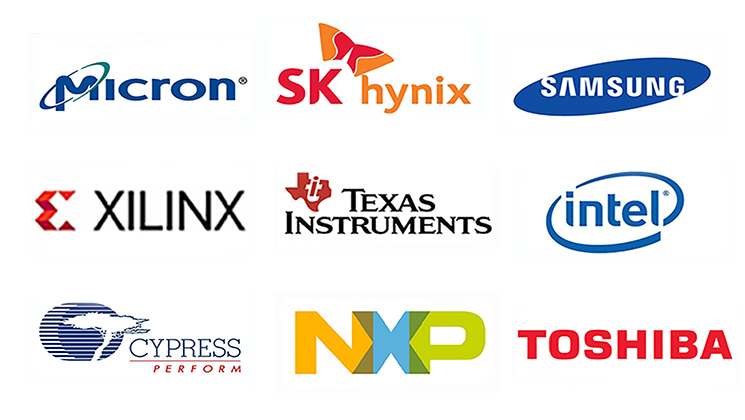It is estimated that the global foundry output value will increase by 23.8% in 2020, a record high
The semiconductor research office of trendforce Jibang consulting said that the epidemic in 2020 had impacted many industries. However, thanks to the new normal of life of remote office and teaching, the increased penetration of 5g smart phones and the strong demand for relevant infrastructure, the global semiconductor industry rose against the trend. It is estimated that the annual growth of global foundry output value will be as high as 23.8% in 2020, Break through the peak in recent ten years.
From the perspective of order receiving, it is estimated that the tight capacity of semiconductor OEM will continue until at least the first half of 2021. In terms of advanced processes below 10nm, the capacity of TSMC and Samsung is almost full at this stage, and 4 / 3nm processes will be launched in succession in the next year, making asimai's EUV equipment a scarce resource that wafer factories are eager to compete for, Without EUV machines, it is impossible to expand production capacity in advanced processes. In addition, with the support of CIS, sddi (small-size display driver chip), RF, TV chip, WiFi, Bluetooth, TWS and other requirements for processes above 28nm, and the help of emerging applications such as WiFi 6 and AI memory heterogeneous integration, the production capacity is also in increasing shortage.
It is worth mentioning that 8-inch production capacity has been hard to find since the second half of 2019. Since there are almost no suppliers for 8-inch equipment, the price of 8-inch machines has risen, while the price of 8-inch wafers is relatively low. Therefore, generally speaking, the expansion of 8-inch production is not cost-effective; However, the production of products such as PMIC (power management chip) and lddi (large-size display driver chip) in 8-inch factory is the most cost-effective, and there is no need to switch to 12 inch or even advanced process. At that time, we entered the 5g era. The demand for PMIC, especially in smart phones and base stations, increased exponentially, resulting in limited capacity in short supply. Although some products have the opportunity to be gradually transferred to 12 inch plants, it is still difficult to alleviate the market situation of 8-inch demand shortage in the short term.
TSMC is actively expanding its 5nm process and will cover nearly 60% of the advanced process market by the end of 2021
Looking at the most advanced 5nm process at present, after Huawei's Hisilicon was restricted by the US ban, Apple was the only customer left in the 5nm process that was mass produced in early 2020. Even if Apple actively imported self-developed MAC CPU and FPGA accelerator card applied to servers, its total investment was still difficult to fully make up for the vacant capacity of Hisilicon, resulting in the 5nm production rate falling to about 85-90% in the second half of this year. Looking forward to 2021, in addition to Apple's continuous production of A15 bionic with 5nm +, amd 5nm Zen 4 architecture products will also start small-scale trial production, supporting the 5nm production rate to maintain at 85 ~ 90%.
It is worth mentioning that from the end of 2021 to 2022, MediaTek, NVIDIA and Qualcomm have mass production plans for 5 / 4nm products. In addition, the large volume of AMD zen4 architecture and Intel CPU outsourcing production are expected to adopt the 5nm process first in 2022. The huge demand has prompted TSMC to embark on the 5nm production expansion plan. According to the current observation, Apple is highly likely to continue to use 4nm (5nm miniaturization process) to produce a16 processor in 2022. At that time, it is not ruled out that TSMC will further expand the 5nm capacity to support the strong demand of customers. In contrast to Samsung, although NVIDIA hopper geforce platform GPU will continue to be commissioned by Samsung, and with the injection of Qualcomm Xiaolong 885 and Samsung exynos flagship series, Samsung 5nm also has production expansion plans in 2021, there is still about 20% capacity gap compared with TSMC.
Based on the above, in recent years, liandian and lattice core have successively withdrawn from the advanced process competition. Leaving aside SMIC, which has been plagued by the recent shipment ban of the United States, at present, only TSMC and Samsung are left to compete with each other at nodes of 7Nm and below. From the perspective of customers, Samsung also actively expanded 5nm production capacity in pingze new plant after obtaining NVIDIA's large order. However, in 2022, due to the high possibility of Qualcomm Xiaolong 895 planning to adopt TSMC 4nm, Samsung will only have NVIDIA and Samsung (LSI) as its main customers at that time; In contrast, TSMC, in addition to apple, AMD, MediaTek, NVIDIA and Qualcomm, has more opportunities to win the favor of Intel CPU outsourcing. Trendforce Jibang consulting believes that TSMC's 5nm demand will be relatively stable and strong in 2022, and the 3nm process will be mass produced in the second half of 2022, which is expected to further boost its market share













